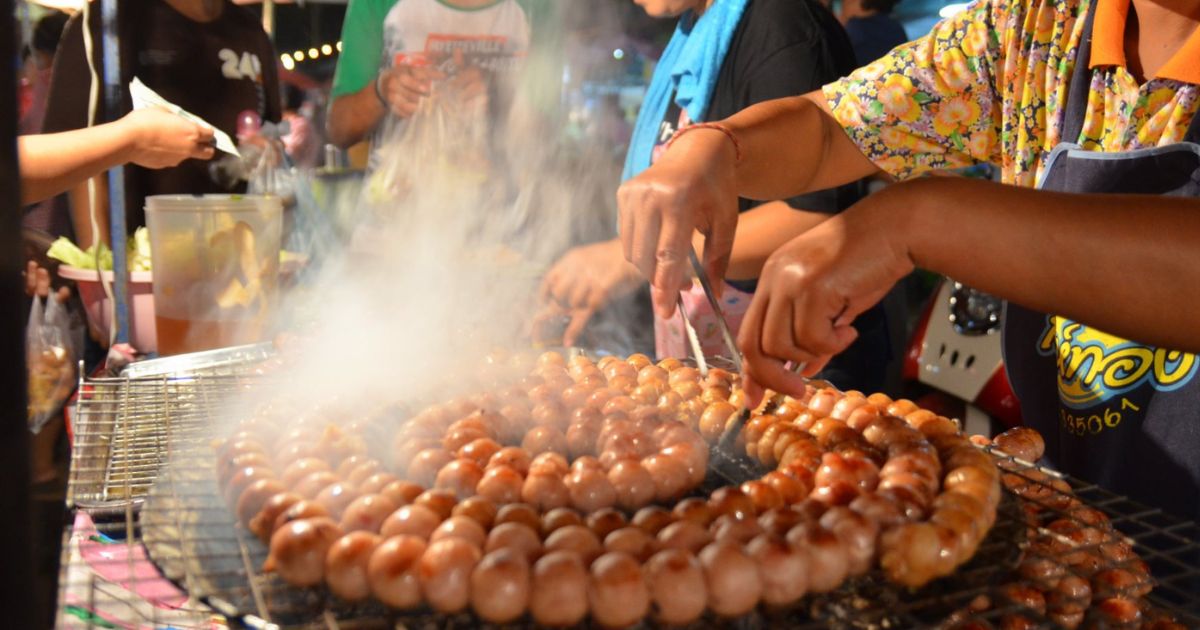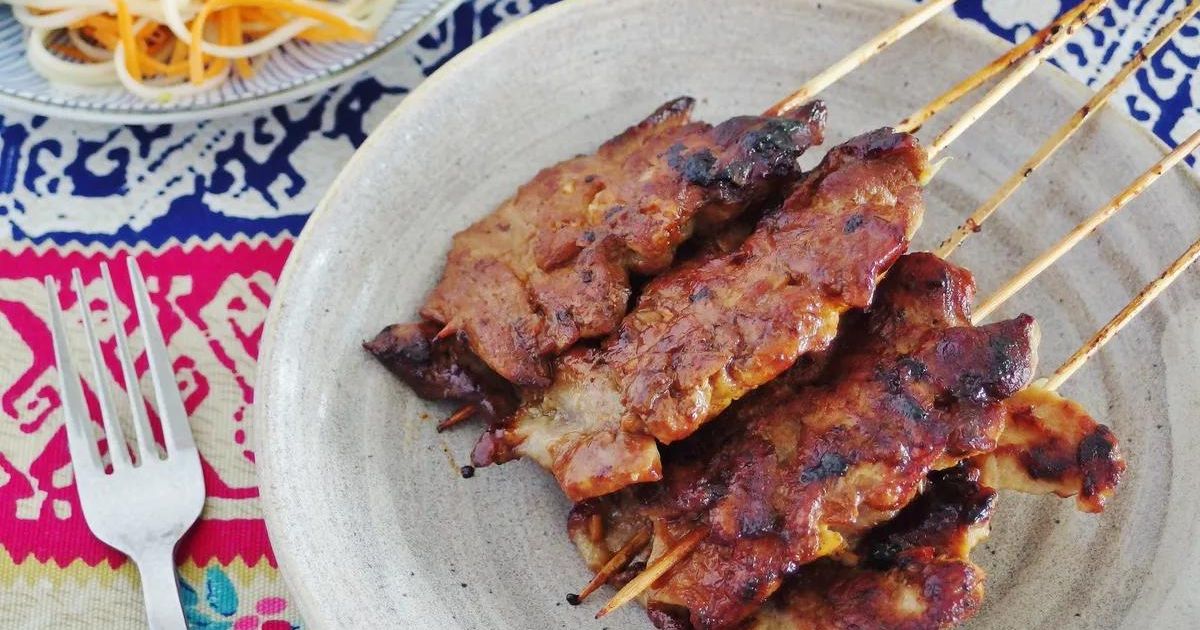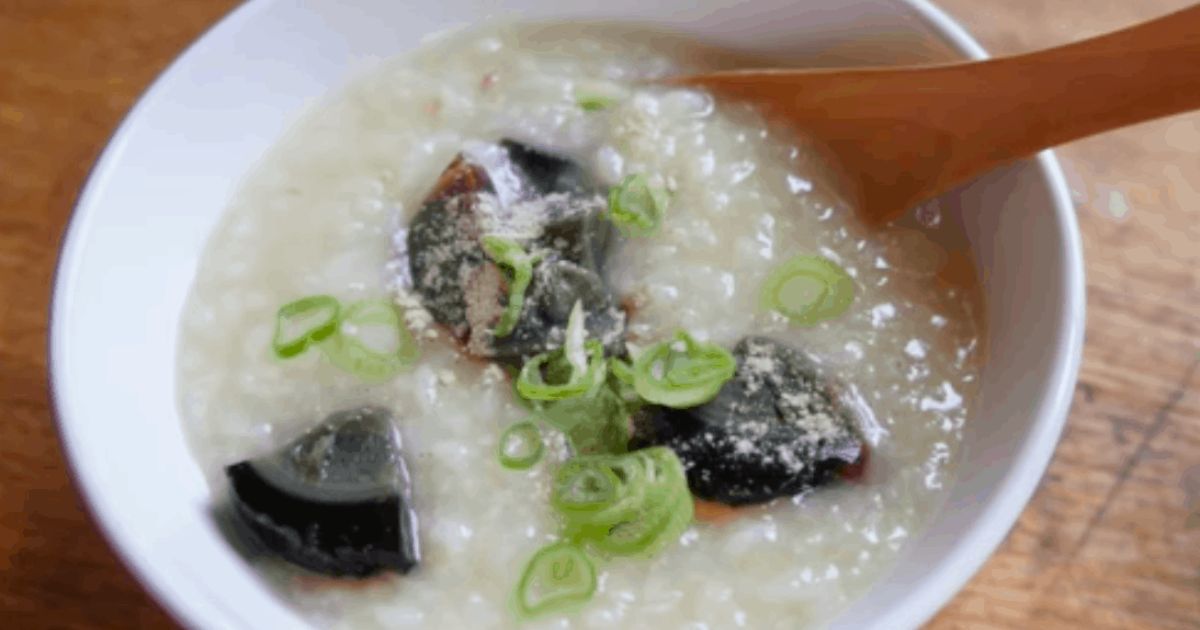Top 10 Street Foods to Avoid in Bangkok : “Spice with Caution: Unveiling Bangkok’s Street Food Secrets”
Bangkok, the vibrant capital of Thailand, is a food lover’s paradise, known for its rich and diverse street food scene. From tantalizing aromas to vibrant colors, the city’s street corners are adorned with a myriad of culinary delights.
However, with great variety comes the need for caution. Not all street foods are created equal, and some might not sit well with everyone’s stomach. In this guide, we’ll explore the top 10 street foods in Bangkok that you might want to think twice about before indulging.
1. Sai Krok Isan (Isan Sausage):

A popular street snack originating from the northeastern region of Thailand, Sai Krok Isan is a fermented pork sausage that might not appeal to everyone’s taste buds. The strong, sour flavor is an acquired taste, and the fermentation process might be unsettling for those with sensitive stomachs. Additionally, hygiene standards for preparing fermented foods can vary, posing a potential risk for digestive issues.
2. Som Tum (Green Papaya Salad):
While Som Tum is a beloved Thai dish, the raw ingredients and potent flavors may not be suitable for everyone. The salad typically features shredded green papaya, chili, lime, fish sauce, and peanuts. For those unaccustomed to the spiciness and unique combination of ingredients, Som Tum might be a risky choice. Be cautious, especially if you have a sensitive stomach or are not accustomed to Thai spice levels.
3. Kanom Bueang (Thai Crepes):
These crispy, thin crepes filled with sweet or savory toppings may look tempting, but hygiene is a significant concern. Due to the open-air preparation of Kanom Bueang, the risk of contamination is higher. Consuming street food that involves raw toppings can increase the chances of foodborne illnesses. Exercise caution, especially if the vendor’s hygiene practices are questionable.
4. Larb Moo Tod (Fried Pork Balls):

While deep-fried delights are a staple of street food culture, Larb Moo Tod, or fried pork balls, can be heavy on the stomach. The combination of deep-frying and the potential use of low-quality oil might lead to an unpleasant gastronomic experience. Excessive consumption of fried foods can also contribute to health issues, so it’s advisable to indulge in moderation.
5. Pla Pao (Grilled Fish):
Although grilled fish is a popular choice among locals and tourists alike, the manner of preparation might not align with everyone’s preferences. Pla Pao, a salt-crusted grilled fish, is often served whole, and the challenge lies in navigating the bones and removing the flesh. For those who prefer a more straightforward eating experience, this dish can be a bit cumbersome.
6. Moo Ping (Grilled Pork Skewers):

While Moo Ping is a favorite among street food enthusiasts, it’s essential to consider the hygiene of the grilling process. Some vendors may not adhere to strict food safety standards, and consuming undercooked or improperly handled pork can lead to foodborne illnesses. Look for vendors with clean and well-maintained grilling equipment to reduce the risk.
7. Kai Jeow (Thai Omelette):
Although Thai omelettes are a quick and tasty option, the use of oil and unregulated cooking conditions can be a cause for concern. Some street vendors may reuse cooking oil, leading to a less-than-ideal dining experience. If you’re mindful of the oil quality and cleanliness, indulging in a Kai Jeow can still be a delicious experience.
Also Read – Pizza Layering – Elevating Every Bite with Pizza Layering Mastery
8. Gai Tod (Fried Chicken):

Fried chicken is a global favorite, but when it comes to street food, caution is warranted. Gai Tod from street vendors might not meet the hygiene standards expected from established restaurants. The risk of contamination, undercooked meat, or the use of recycled oil can contribute to digestive issues. Opt for reputable vendors with visible cleanliness practices.
9. Nam Prik (Chili Dip):
Nam Prik, a spicy chili dip served with various accompaniments, can be a challenge for those unaccustomed to intense heat. The spice level varies widely, and what might be tolerable for locals could be overwhelming for tourists. Exercise caution when sampling Nam Prik, and communicate your spice preferences with the vendor to avoid any unpleasant surprises.
10. Jok (Rice Porridge):

While Jok is a popular breakfast option in Bangkok, its appeal may not be universal. The texture of rice porridge might be off-putting for some, and the addition of various meats and condiments may not align with everyone’s taste. If you’re not a fan of porridge-like textures or unfamiliar ingredients, it’s best to explore other breakfast options available in the vibrant city.
Conclusion:
Bangkok’s street food scene is a culinary adventure waiting to be explored, but wise choices are essential to ensure a delightful experience.
While the above-mentioned street foods might not be everyone’s cup of tea, the key is to exercise caution, choose reputable vendors, and communicate any dietary preferences or restrictions.
By navigating the bustling streets of Bangkok with discernment, you can savor the best the city has to offer without compromising your gastronomic well-being.
Also Read – Top 10 Must-Visit Places for Americans
Also Read – McDonald’s New Spinoff Restaurant : Menu and Details

